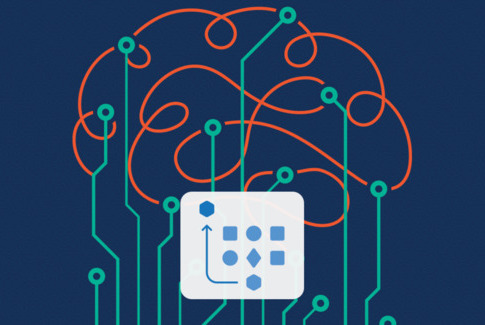
Machine learning (ML) is inevitable for the enterprise business. Your organization has either already adopted it in some capacity or will be in the near future. That is good news in that companies are recognizing the need to generate value from their data. On the other hand, these companies are adopting technology that requires resources they often cannot deliver — namely, data.
Data is the heart and soul of machine learning. The level of success you achieve with your model is a direct reflection of the data you use to train it. Unfortunately, the baseline data requirements — data volume, in particular — of a typical ML model have made success nearly unattainable. So much, in fact, that only 13% of machine learning models make it into production.
Most organizations simply do not have access to the volume of data they need to train a machine learning model. While that does not disqualify you from building a successful model, it limits the depth of features you can create through the feature engineering process. What you do with the feature engineering process will often make or break the efficacy of your model.
What Is Feature Engineering?
Feature engineering is essential to training your machine learning model. It is the process of creating new data not already available in the training set with the goal of simplifying data transformations and ultimately improving model accuracy. In the case of natural language processing, features can be both shallow and deep.
- Shallow features are easy to interpret and, thus, easy for a machine to compute. They include things like word and sentence count, unique word ratio and sentence type.
- Deep features are more complex and require more data and computing power to identify. These include things like part-of-speech tagging, named entity recognition and sentiment analysis.
With these features, your model can make better sense of the data and generate more meaning and ‘known truths’ from it.
What Makes Feature Engineering Challenging?
Your feature engineering process is largely dependent on the NLP engine (e.g., library) you use to process text. The more sophisticated the NLP engine, the more features you can create from your data. And the more features you have to choose from, the more opportunity you have to achieve a better and faster result with your model.
Most NLP engines can offer you baseline capabilities that enable you to interpret language. You can discern words from text, identify their parts of speech and maybe even assign polarity to them for sentiment analysis purposes. However, these features provide limited information with which to connect concepts and establish context.
With limited features, you leave far more predictive work for your model to do when building out the feature vectors (i.e., descriptive attributes) from which your model will learn. This is where data volume becomes necessary, as machine learning heavily benefits from additional information it can use to populate the feature vectors.
A Remedy to the Feature Data Situation
Your approach to NLP goes a long way toward determining the sophistication and, ultimately, the success of your machine learning model. Though many view symbolic and machine learning approaches as completely separate methodologies, they are, in this case, a match made in heaven.
By using symbolic data during the feature engineering process, your model can not only enrich many of the shallower features (e.g., word count, part of speech, etc.) but expand the number of features to choose from come model training. These expanded features can include things like word meanings, syncons (a feature unique to expert.ai) and dependencies between concepts.
This symbolic information is established knowledge, meaning you have established truths to build out your feature vectors rather than leave it to inference. As a result:
- You can train models with smaller data sets.
- You require far less computing power to train your model.
- Your computing costs are significantly cheaper.
The kicker is that all of these benefits can be realized while achieving the same result as a pure ML model. Seems like a no-brainer, right?
Taking on Feature Enrichment with Expert.ai
The expert.ai Platform is an ideal solution to aid in feature enrichment as it leverages a robust knowledge graph to analyze your data. Therefore, the unstructured data you feed it can be disambiguated and understood in context which enables you to enrich your feature data and, subsequently, your feature vectors.
For example, our NLP engine may come across the word ‘book’ which can have multiple meanings and represent different parts of speech. With ease, we can determine the intended use of the word while also adding important feature data such as syncons (i.e., synonymous concepts) which, in this case, could be ‘to reserve.’
These types of connections are essential to enriching feature data and, ultimately, improving the quality of your machine learning model. With this hybrid approach, you can create the high-quality model you set out for without mixing in the key ingredients for failure. Let us show you how.


